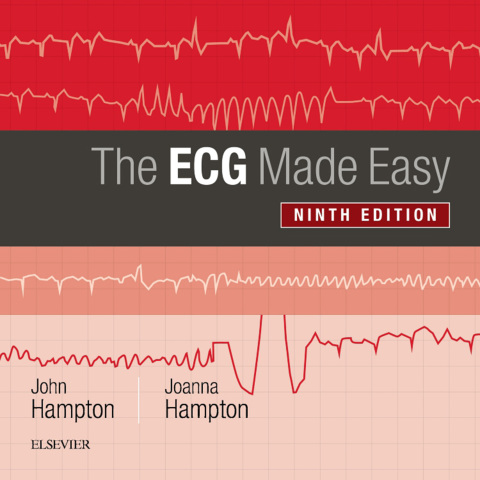Description
Efnisyfirlit
- Instructions for online access
- Cover image
- Title Page
- Table of Contents
- Copyright
- How to use this book
- Part 1: The ECG made very easy indeed: a beginner’s guide
- Part 2: The basics: the fundamentals of ECG recording, reporting and interpretation
- Part 3: Making the most of the ECG: the clinical interpretation of individual ECGs
- Part 4: Now test yourself
- Quick reminders
- Further reading
- Preface
- Part 1 The ECG made very easy indeed: a beginner’s guide
- 1 The ECG made very easy indeed
- What is an ECG?
- When do you need an ECG?
- How to record an ECG?
- How to interpret an ECG: the basics
- Rhythms you must be able to recognize
- Patterns you must be able to recognize
- The normal ECG and its variants
- ECG red flags
- Part 2 The basics: the fundamentals of ECG recording, reporting and interpretation
- 2 What the ECG is about
- What to Expect from the ECG
- The electricity of the heart
- The different parts of the ECG
- The ECG – electrical pictures
- The shape of the QRS complex
- Making a recording – practical points
- How to report an ECG
- 3 Conduction and its problems
- Conduction problems in the AV node and His bundle
- Conduction problems in the right and left bundle branches – bundle branch block
- Conduction problems in the distal parts of the left bundle branch
- What to do
- 4 The rhythm of the heart
- The intrinsic rhythmicity of the heart
- Abnormal rhythms
- The bradycardias – the slow rhythms
- Extrasystoles
- The tachycardias – the fast rhythms
- Fibrillation
- Wolff-Parkinson-White syndrome
- The origins of tachycardias
- What to do
- The Identification of Rhythm Abnormalities
- 5 Abnormalities of P waves, QRS complexes and T waves
- Abnormalities of the P wave
- Abnormalities of the QRS complex
- Abnormalities of the ST segment
- Abnormalities of the T wave
- Other abnormalities of the ST segment and the T wave
- Part 3 Making the most of the ECG: the clinical interpretation of individual ECGs
- 6 The ECG in healthy subjects
- The normal cardiac rhythm
- The P wave
- Conduction
- The QRS complex
- The ST segment
- The T wave
- U waves
- The ECG in athletes
- 7 The ECG in patients with chest pain or breathlessness
- The ECG in patients with constant chest pain
- The ECG in patients with intermittent chest pain
- The ECG in patients with breathlessness
- 8 The ECG in patients with palpitations or syncope
- The ECG when the patient has no symptoms
- The ECG when the patient has symptoms
- Pacemakers
- Cardiac arrest
- Part 4 Now test yourself
- 9 ECGs you must be able to recognize
- ECG descriptions and interpretations
- Index
- Quick Reminder Guide
- When reporting an ECG, remember
- What to Look for
- Glossary







Reviews
There are no reviews yet.